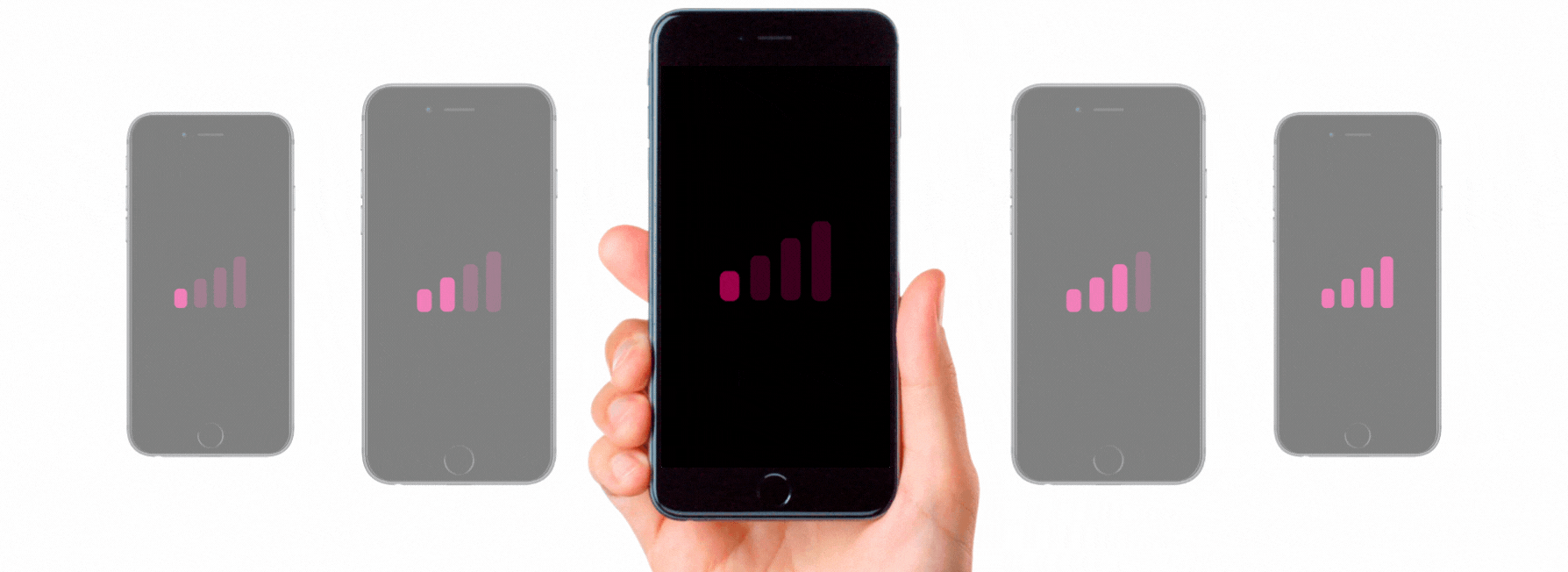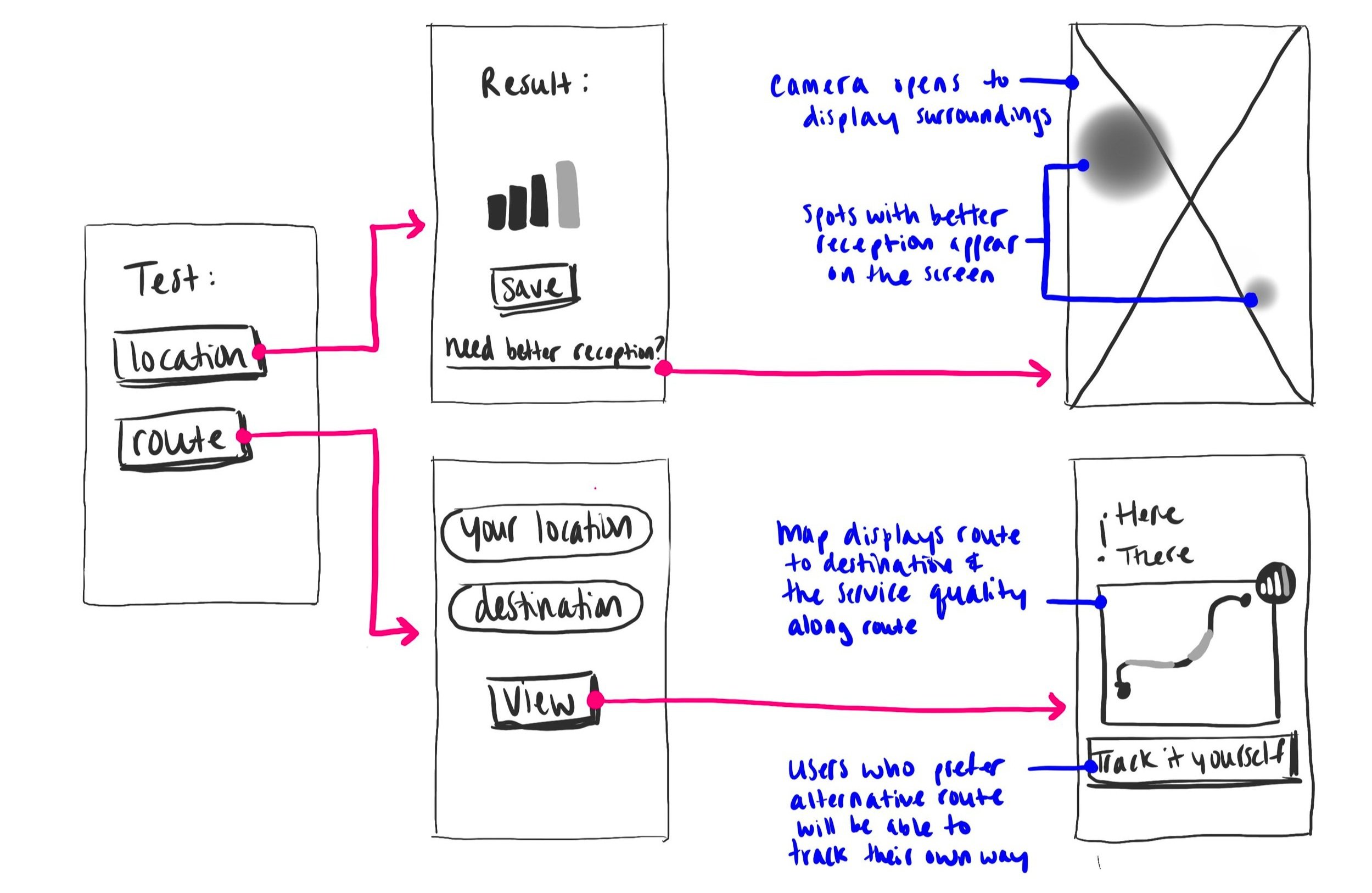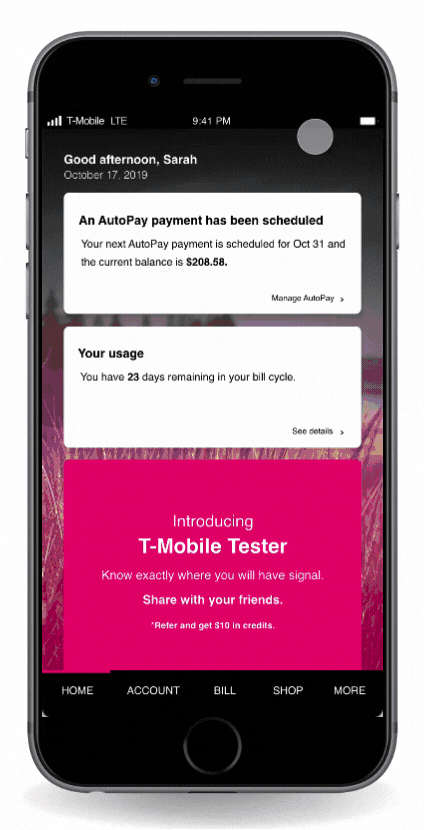T-Mobile Tester
T-Mobile Tester
The Client
T-Mobile
The brief
T-Mobile Tester was ideated and designed for T-Mobile’s 2019 Innovation Day. The idea is that a potential user could test out T-Mobile’s service in the places that are most important to them prior to switching to the carrier’s service.
the nitty gritty
Our goal was to create an innovative experience for potential T-Mobile customers. We wanted to make sure users would be confident of T-Mobile’s value before switching their family’s plan over to the carrier. At the time, T-Mobile had an existing product that we were trying to improve on. We had a booth to show our prototype at the company’s Innovation Day Fair.
This app was designed in AdobeXD and took about 3 weeks to complete. I was the team lead on a team of 4 UX Designers and an Engineer.
Discover
Research
We knew that T-Mobile had an existing product called Test Drive, which is what initially piqued our interest. In getting to know the product, we realized that it was chock-full of limitations: it was a hotspot device, which a user had to order, to carry around with them, and return within 30 days. We aimed to make the process of choosing a new service plan more seamless, fun experience.
Interviews
We realized that this is a product that could be used by anyone choosing a new phone plan or even testing out 5G service. As such, we wanted to make the experience more accessible by eliminating the need for a separate device and, instead, creating an app that could be downloaded to any phone. We spoke with 9 people and, based on our interviews, came up with the following personas as well as a journey map to drive designs:
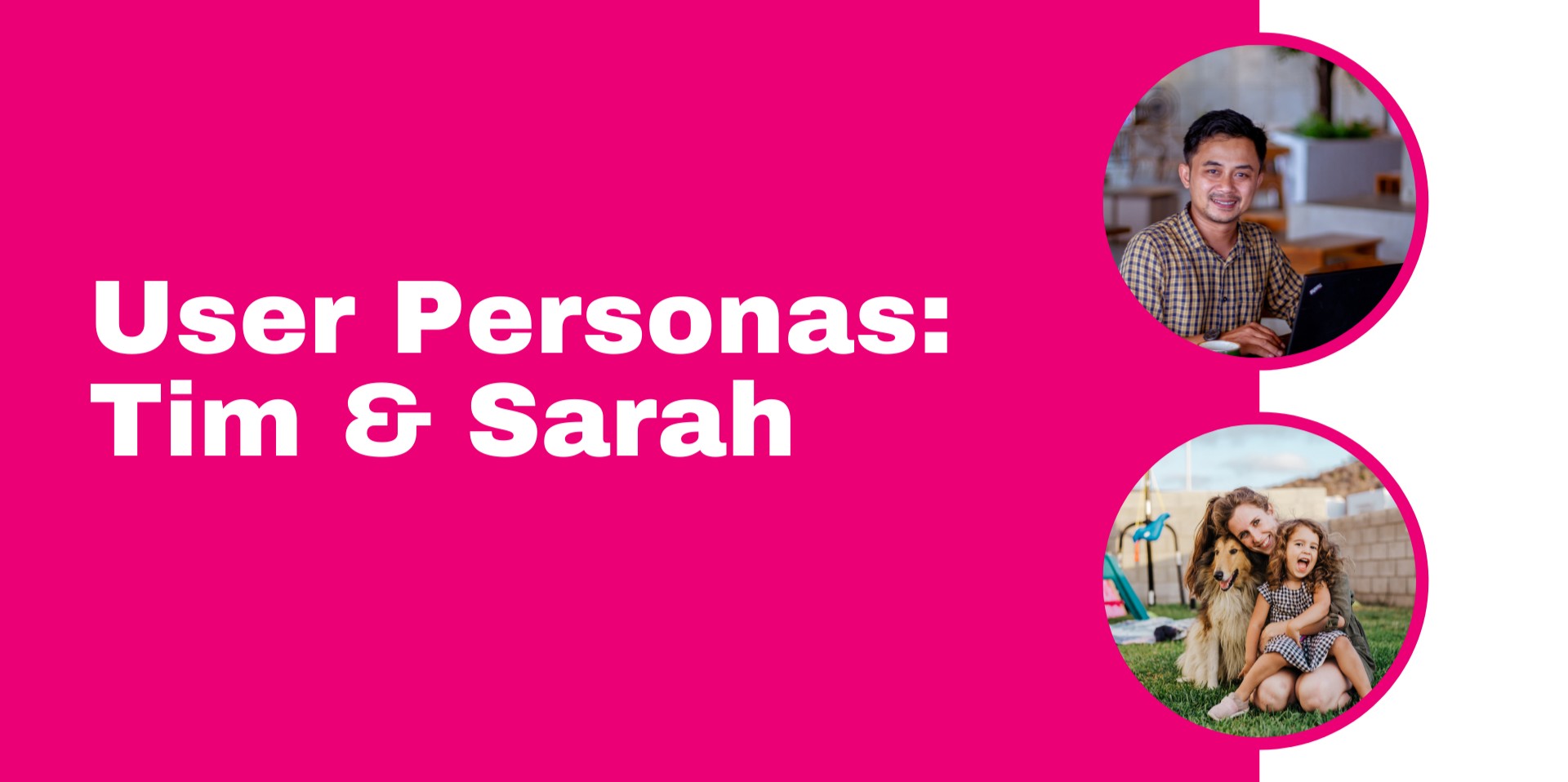
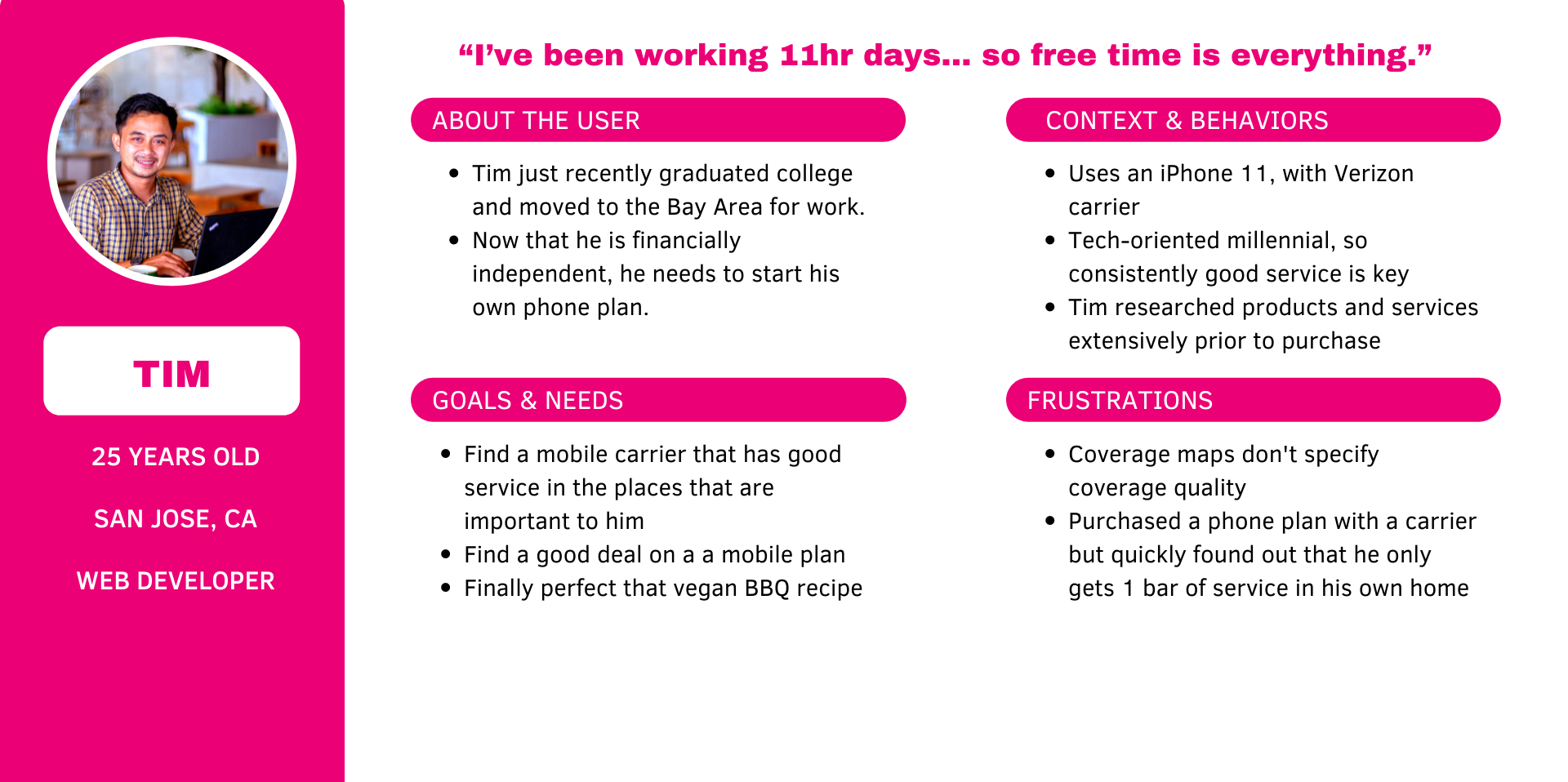
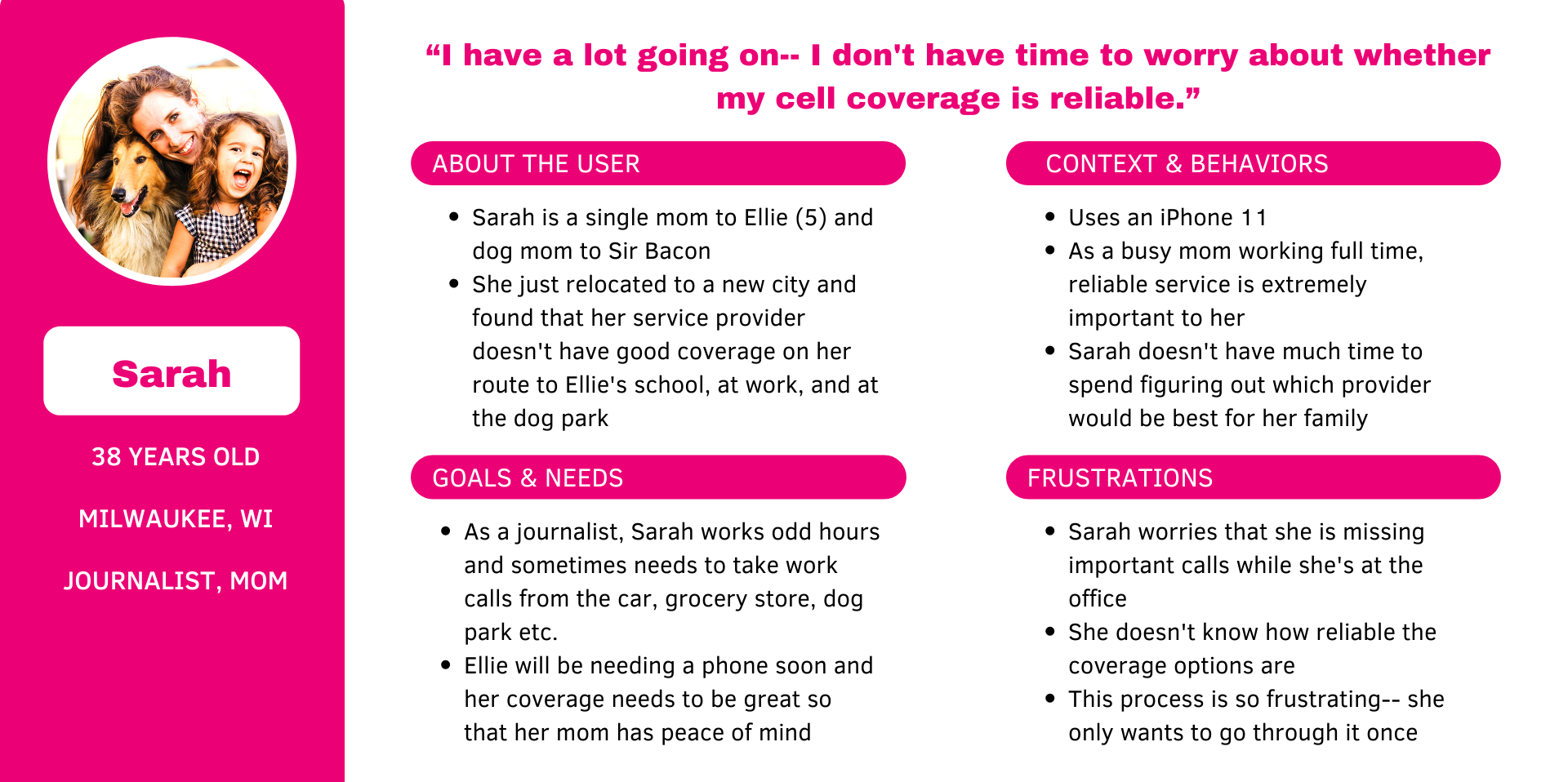
Define
Our research and user interviews helped us to identify some key opportunities for optimization: There was a need for potential customers to access a more personalized and detailed view of coverage. Users note that “coverage” does not mean 4 bars of service, and potential users have no way of knowing what the actual coverage they receive in their homes, schools, work locations, and frequently used routes. Additionally, the limitations of T-Mobile’s existing Test Drive device don’t inspire potential users’ confidence in the coverage they would receive. Out goal was to create something more modern, accessible, and convenient: T-Mobile Tester. Proposed feature comparison can be found below.
Develop
Lo-Fi Wireframes
Mid-Fi Wireframes & Testing
Some findings from Mid-Fi usability testing:
Users should be able to name any saved scores (or locations and/or routes)
Saved scores need to be accessed in one place where the user can see an aggregate score
A gamified experience can be useful for potential and existing users, especially when outside of the home and away from wifi
Hi-Fi Prototype
This prototype takes the user through the following flow:
Testing their potential service while en route
Seeing their list of saved locations as well as the combined score
Testing their potential service in a specific location
Using a gamified experience to move through their environment in (guided) search for better reception
Some next steps:
Allow filtering and sorting for saved locations and routes
Add a confirmation when user removes a saved location or route
Add instructional flow to help the user understand how to utilize the service finding feature
Hide easter eggs promotions throughout the application
Deliver
My team and I presented our conceptual prototype at one of 20 booths at T-Mobile’s Annual Innovation Day. Our prototype was very well received and inspired both curiosity and awe in the VIPs attending the event. It especially piqued interest due to its versatility and potential use in 5G network expansion.
takeaways & Challanges
Collaborating closely with an engineer allowed for on-the-fly discussion regarding any technical limitations.
My team and I brainstormed and ideated together, but digitized and tested the parts separately— this ultimately led to slight variations in styles and animations that needed to be addressed at the end. Moving forward, this is certainly something to take note of earlier on in the process and can be fixed easily with a common style guide.
I’m proud of the work my team did to make sure the hi-fi prototype was complete— presenting at a convention where passersby get to interact with a prototype IRL and there cannot be any gaps in the experience.
